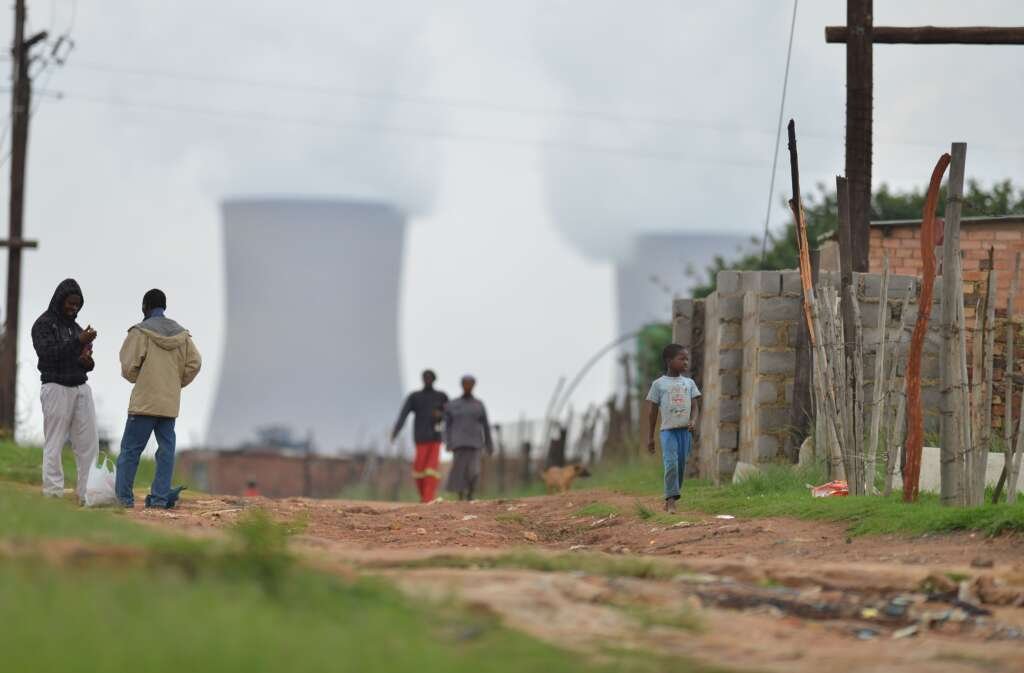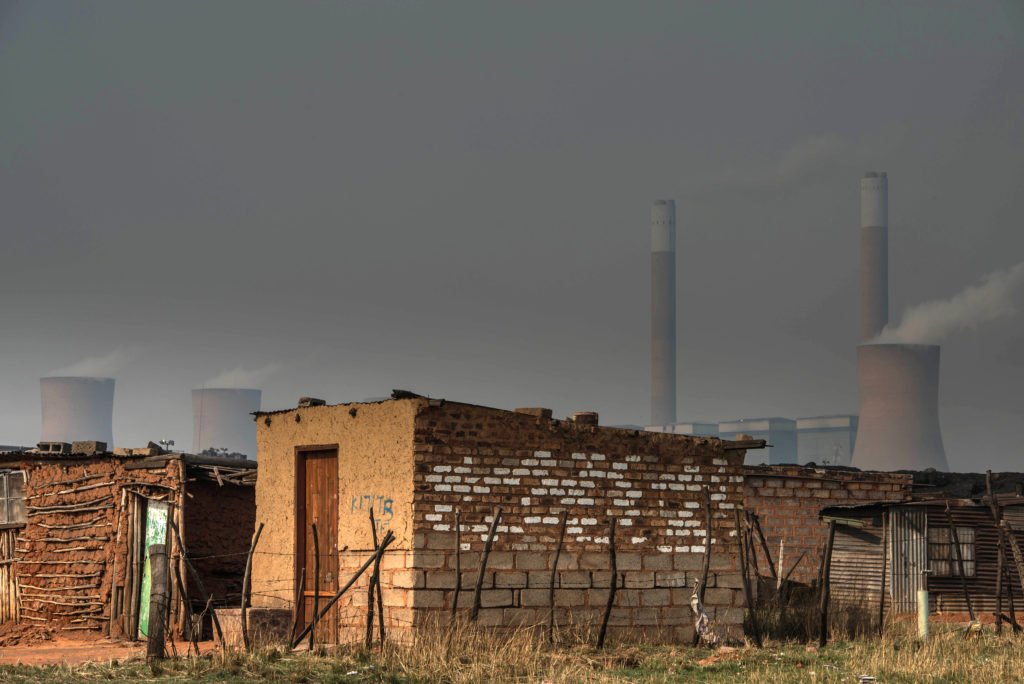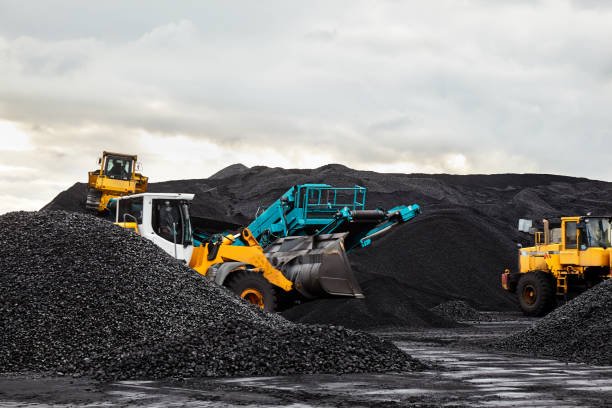South Africa’s persistent reliance on coal for electricity generation presents an intriguing and complex dilemma, especially as the world steadily transitions to cleaner, renewable energy sources. Recent data reveals that in 2021, coal generated a monumental 84.4% of the country’s electricity, while only 13.7% came from renewable sources like wind and solar. This is in stark contrast to global shifts, where clean energy now accounts for 38% of electricity production, exceeding that of coal. The situation is even more perplexing when considering that many African nations have significantly reduced or even eliminated their dependency on coal. So, why does South Africa continue to be an outlier?
This question takes on a heightened sense of urgency in light of South Africa’s existing energy challenges. The nation faces a power supply gap estimated at 4-to-6 GW, leading to frequent load shedding and affecting the daily lives of its citizens. As a remedy, the Eskom Just Energy Transition Project (EJETP) has been initiated, aiming to replace aging coal plants with renewable energy solutions. However, the transition is fraught with challenges, including economic, infrastructural, and policy constraints that make it a slow and complicated process.
Article Highlights
- South Africa’s Heavy Coal Dependency: The nation relies on coal for 84.4% of its electricity generation, a stark contrast to the global trend towards clean energy.
- Economic Factors: Coal mining is a significant contributor to the South African economy, providing jobs and revenue from exports.
- Environmental Impact: The country’s use of coal leads to increased carbon emissions, which surpasses other African nations like Egypt and Kenya.
- Eskom Just Energy Transition Project: A $497 million initiative approved by the World Bank to help South Africa transition from coal to renewable energy sources like wind and solar.
- Energy Security Concerns: Aging coal plants have led to unreliable power supply and load shedding, affecting daily life and economic prospects.
- Challenges and Opportunities in Transition: Moving away from coal poses short-term economic risks but offers long-term benefits like job creation in new sectors and alignment with international climate goals.
- Integrated Resource Plan: South Africa’s energy needs and costs analysis that calls for reducing fossil fuel dependence and scaling up renewable energy.
In this article, we will explore the multitude of factors contributing to South Africa’s continued dependence on coal, examine the challenges and opportunities presented by the Eskom Just Energy Transition Project, and discuss the potential impact on South Africa’s energy landscape. We’ll also assess the broader implications for sustainable energy transition in the region and globally.

Why is South Africa so Dependent on Coal as a Form of Electricity Generation
South Africa is so dependent on coal as a form of electricity generation because the country has abundant coal reserves that are relatively shallow and easy to mine, making it a cost-effective option for energy production. Furthermore, the coal industry is a significant part of the South African economy, providing jobs and export revenues; about 28% of coal produced is exported, making South Africa the fourth-largest coal-exporting country in the world. The infrastructure for coal-based electricity is also already in place, with major companies like Ingwe Collieries Limited, Anglo Coal, and Sasol accounting for 85% of the saleable coal production. Additionally, there has been a lack of significant investment in renewable energy technologies, despite their faster build times and environmental benefits. Therefore, a combination of economic incentives, abundant resources, and existing infrastructure makes coal the dominant choice for electricity generation in South Africa.
What Causes a High Demand for Electricity in South Africa
Why is There a Shortage in the Supply of Electricity in South Africa
Solutions to the Electricity Crisis in South Africa
The Abundance and Economic Significance of Coal in South Africa
South Africa’s reliance on coal for electricity generation is deeply rooted in the country’s abundant coal reserves and the economic advantages they bring. Coal deposits in South Africa are relatively shallow with thick seams, making them easier and usually cheaper to mine compared to other countries. This geological advantage has led to the development of a robust coal-mining industry that is a significant contributor to the country’s GDP.
In terms of electricity production, coal accounted for 84.4% in 2021, dwarfing clean energy sources, which only contributed to 13.7% of the total production. This skewed reliance on coal is not just a matter of energy production but also has significant economic ramifications. Major companies like Ingwe Collieries Limited, a BHP Billiton subsidiary; Anglo Coal; Sasol; Eyesizwe; and Kumba Resources Limited collectively account for 85% of the saleable coal production, illustrating the industry’s concentration and economic significance.
Moreover, about 28% of the coal produced is exported mainly through the Richards Bay Coal Terminal, placing South Africa as the fourth-largest coal-exporting country globally. This export market adds significant value to the country’s economy, generating much-needed foreign exchange revenues.
In addition to electricity generation and export, coal also feeds various local industries. For instance, 23% is utilized by petrochemical industries like Sasol, and smaller percentages go to general and metallurgical industries. The diversified usage of coal in various sectors solidifies its central role in the South African economy.
Besides, South Africa’s electricity production cost is among the cheapest in the world due to coal’s affordability. Cheap electricity, in turn, has facilitated industrial growth, thereby creating jobs and boosting the economy.
Takeaways:
- Abundant Reserves: South Africa is endowed with abundant coal reserves that are relatively shallow and thick, making them easier and cheaper to mine.
- Dominant Energy Source: Coal accounted for 84.4% of South Africa’s electricity production in 2021, indicating its overwhelming dominance in the energy mix.
- Economic Contribution: The coal industry is a significant contributor to the South African GDP, sustaining various sectors from electricity to petrochemicals.
- Major Companies: The coal industry is highly concentrated with five major companies accounting for 85% of the saleable coal, signifying its economic weight and importance.
- Export Revenue: About 28% of South Africa’s coal production is exported, making the country the fourth-largest coal exporter in the world and generating valuable foreign exchange.
- Industrial Use: Beyond energy, coal finds application in multiple industries such as petrochemicals, general industry, and metallurgy, contributing to diversified economic benefits.
- Cheap Electricity: Due to the cost-effectiveness of coal, South Africa enjoys some of the lowest electricity production costs in the world.
- Job Creation: The coal industry, directly and indirectly, provides a considerable number of jobs, adding to its economic significance.
- Challenges to Transition: The deeply rooted economic significance of coal makes transitioning to other forms of energy a complex undertaking, both economically and socially.
- Global Implications: As global efforts intensify to move away from fossil fuels, South Africa’s dependency on coal places it at odds with international climate agreements and exposes it to potential economic risks like carbon tariffs.
In summary, South Africa’s considerable dependency on coal for electricity generation is intertwined with abundant natural resources, established infrastructure, and compelling economic benefits. These factors make the shift away from coal a complex and multi-faceted challenge.
Environmental Consequences of Coal Dependency
South Africa’s dependence on coal as a primary source of energy has far-reaching environmental repercussions. One major point to consider is the emission of greenhouse gases. According to a 2021 report by Ember, a non-profit think tank, South Africa’s emissions from electricity production far outpaced other African nations like Egypt and Kenya. This heavy carbon footprint puts South Africa at odds with global efforts to combat climate change, including the Paris Agreement’s goal to limit global temperature rise to 1.5 degrees Celsius.

Moreover, coal mining and combustion produce not only carbon dioxide but also other harmful emissions such as nitrogen oxides (NOx), sulfur oxides (SOx), and particulate matter. These pollutants have severe health impacts, contributing to respiratory diseases among local populations.
Water consumption is another critical environmental concern. The coal industry requires large amounts of water for mining and power generation, putting additional stress on South Africa’s water resources, which are already facing pressure due to climate change and population growth.
Additionally, coal mining leads to land degradation and habitat loss, affecting biodiversity and agricultural productivity. The process also results in substantial amounts of waste, such as coal discards, which pose additional environmental challenges.
In light of these environmental consequences, South Africa faces a dilemma. On the one hand, coal is an economic staple that supports multiple sectors and provides jobs. On the other hand, the environmental costs are increasingly untenable in a world moving towards sustainable energy solutions. This intricate balance is one reason why efforts like the Eskom Just Energy Transition Project are critical for paving the way for more sustainable energy alternatives while mitigating the economic and social impacts.
Takeaways:
- South Africa’s reliance on coal for electricity leads to substantial greenhouse gas emissions, making it a significant contributor to global climate change.
- Harmful byproducts like nitrogen and sulfur oxides from coal combustion have severe health impacts, including respiratory diseases.
- The coal industry’s high water consumption exacerbates water scarcity issues in South Africa, putting additional stress on an already strained resource.
- Coal mining activities result in land degradation and habitat loss, negatively impacting biodiversity and agricultural sectors.
- Environmental consequences, including emissions and resource depletion, make the transition to renewable energy sources urgent, as exemplified by initiatives like the Eskom Just Energy Transition Project.
Why Reducing the Country’s Dependence on Coal Would Have a Negative Impact on the Economy
Coal plays a pivotal role in South Africa’s economy, not just in energy production but also in job creation and export revenue. Here are some of the reasons why shifting away from coal too quickly could have economic repercussions:
- Loss of Jobs: The coal industry is a significant employer in South Africa. According to data, large mining operations like Ingwe Collieries, Anglo Coal, and Sasol account for a substantial portion of the coal production. A rapid transition away from coal would jeopardize these jobs, leading to unemployment and social instability.
- Revenue from Exports: South Africa is the fourth-largest coal exporter in the world. Approximately 28% of its coal production is exported, mainly through the Richards Bay Coal Terminal. A reduction in coal dependency would lead to a decrease in export revenues, affecting the country’s trade balance.
- Investment in Infrastructure: Significant investments have been made in coal mining technology and infrastructure. Transitioning away from coal would mean that these investments might not provide the expected return, resulting in financial losses for investors and the state.
- Energy Security: Coal provides a reliable and constant source of power, contributing to energy security. Until renewables can match this reliability, reducing coal use could make the country vulnerable to energy shortages, impacting industrial operations and economic growth.
- Increased Costs: Transitioning to cleaner energy might result in increased operational costs initially, which could be passed down to consumers in the form of higher utility bills, thereby affecting the cost of living and business operating costs.
Transitioning to Renewable Energy: Challenges and Opportunities
Despite the drawbacks, there are significant benefits and opportunities in moving toward renewable energy:
- Reduced Carbon Footprint: Renewable energy sources like solar and wind produce zero emissions during operation, contributing to global efforts to combat climate change.
- Cost-Effectiveness: In the long run, renewables are becoming increasingly cost-competitive. For instance, wind and solar have less than a 2-year build time compared to coal’s 10-12 years, offering faster returns on investment.
- Energy Security in the Long Run: With renewable sources like wind and solar, South Africa could produce its own energy, reducing dependency on imports and providing long-term energy security.
- International Compliance: Transitioning to renewables will align South Africa with international climate agreements like the Paris Accord, potentially opening up access to international funding and partnerships for green projects.
- Technological Innovation and Job Creation: The push toward renewables can stimulate technological innovation, leading to new job opportunities. Programs like the Eskom Just Energy Transition Project offer a blueprint for how this transition can be managed to benefit both the economy and the workforce.
However, challenges remain, such as:
- High Initial Costs: Renewable energy technologies often require significant initial investment, making it a less attractive option for a developing economy.
- Grid Adaptability: The existing electrical grid is built for centralized, constant power sources like coal, and would need extensive modification to accommodate variable renewable energy sources.
- Policy and Regulation: Effective policies and incentives are needed to make the transition smoother and more economically viable.
In conclusion, while transitioning from coal to renewable energy poses challenges and immediate economic impacts, the long-term benefits for both the environment and the economy provide compelling reasons to pursue this change cautiously yet decisively.
List of All Coal Electric Power Stations in South Africa
Understanding the magnitude of South Africa’s dependency on coal as an energy source requires a closer look at the numerous coal-fired power stations spread across the country. These facilities are integral to the nation’s electricity grid and contribute to the 84.4% of power generated from coal. Below is a list of key coal electric power stations (coal-fired) in South Africa:
- Kendal Power Station: Located in Mpumalanga, Kendal is one of the largest coal-fired power stations in the world.
- Matla Power Station: Also in Mpumalanga, this station has six 600 MW units for a total capacity of 3,600 MW.
- Kriel Power Station: Situated near the Kriel coal mine, this station serves as a base load power plant.
- Duvha Power Station: With six 600 MW units, this station has a total capacity of 3,600 MW and is situated in Mpumalanga.
- Lethabo Power Station: Located in the Free State, it has a total capacity of 3,708 MW.
- Tutuka Power Station: Also in Mpumalanga, Tutuka has a total capacity of 3,654 MW.
- Majuba Power Station: With a unique design, Majuba uses a blend of coal sources and has a total capacity of 4,110 MW.
- Grootvlei Power Station: Situated in Mpumalanga, this plant has six 200 MW units for a total capacity of 1,200 MW.
- Camden Power Station: Initially commissioned in the 1960s and later recommissioned in 2005, Camden has a total capacity of 1,580 MW.
- Arnot Power Station: Located near Middelburg, this station has six 350 MW units for a total capacity of 2,100 MW.
- Hendrina Power Station: One of the older plants, Hendrina has a total capacity of 2,000 MW.
- Komati Power Station: Recently shut down as part of the Eskom Just Energy Transition Project, Komati had a total capacity of 1,000 MW.
These stations are instrumental in providing power to a country where electricity demand is growing. However, they also play a significant role in the nation’s elevated carbon emissions and its slow progress toward adopting renewable energy sources. Therefore, the future of these power plants is a topic of ongoing debate, especially considering the global push towards clean energy.
FAQs on South African Coal Electricity
How Many Coal Power Stations are in South Africa?
As of the latest data, there are 12 major coal-fired power stations in South Africa. These stations form the backbone of the country’s electricity supply, providing more than 84% of its electrical energy.
What is the Biggest Power Station in South Africa?
The largest power station in South Africa is the Kendal Power Station, located in Mpumalanga. It is one of the largest coal-fired power stations in the world and has a total capacity that exceeds 4,000 MW.
Are There Hydroelectric Power Stations in South Africa?
Yes, South Africa has a limited number of hydroelectric power stations. These stations are generally smaller in scale compared to the coal-fired stations and contribute a smaller percentage to the country’s electricity supply.
How Many Hydroelectric Power Stations are in South Africa?
South Africa has around 22 hydroelectric power stations. These include both conventional hydro stations and pumped storage schemes. However, they contribute less than 5% of the country’s total electricity generation.
What are the Largest Hydroelectric Power Stations in South Africa?
The largest hydroelectric power station in South Africa is the Gariep Dam, followed by the Vanderkloof Dam. Both of these dams are part of the Orange River Project.
What is the Gariep Hydroelectric Power Station?
The Gariep Dam, located on the Orange River between the Eastern Cape and Free State, is South Africa’s largest hydroelectric power station. The station has a total installed capacity of around 360 MW and serves both as a base load and peak load plant.
Conclusion
In conclusion, South Africa’s heavy reliance on coal as a primary source of electricity is rooted in several economic and historical factors. The nation’s abundant coal reserves have made it an attractive and convenient choice for power generation, providing a robust backbone for the country’s electrical infrastructure. Coal mining and exportation also create jobs and contribute significantly to the national economy. However, this coal dependency comes at a high environmental cost, including increased emissions and detrimental impacts on air and water quality. Projects like the Eskom Just Energy Transition Project signify a step towards sustainable energy but underline the complexities involved in such a transition, especially considering the economic implications like job loss and reduced export revenue.
It is also crucial to understand that the move towards renewable energy presents both challenges and opportunities. While the initial costs are high and could impact the economy negatively in the short term, the long-term benefits include improved energy security, job creation in new sectors, and a significant reduction in carbon emissions. The transition aligns with international climate goals, and over time, renewables could become more cost-effective than coal, providing both economic and environmental advantages. The focus now should be on managing this energy transition in a manner that mitigates economic disruptions while maximizing long-term gains.

